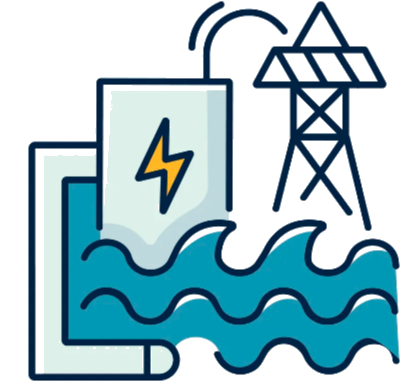Wave Energy Converters

Introduction to Wave Energy Converters
Wave energy converters (WECs) are devices that capture the energy from ocean waves and convert it into usable electrical energy. These devices play a key role in harnessing the power of waves and transforming it into a renewable energy source. Various types of WECs have been developed to extract energy from different wave characteristics and locations.
Question 1: What are Wave Energy Converters?
a) Devices that convert wave energy into mechanical energy
b) Devices that convert wave energy into electrical energy
c) Devices that convert wave energy into thermal energy
Answer: b) Devices that convert wave energy into electrical energy
Types of Wave Energy Converters
There are different types of wave energy converters, including:
- Point Absorbers: These devices use buoyant structures to capture wave energy from multiple directions.
- Attenuators: These devices consist of multiple linked segments that move with the waves, generating electricity through hydraulic or mechanical systems.
- Overtopping Devices: These devices utilize wave action to fill a reservoir, and the stored water is released through turbines to generate electricity.
- Oscillating Water Columns: These devices use the rise and fall of water inside a chamber to drive air through a turbine and produce electricity.
Question 2: What are some types of Wave Energy Converters?
a) Point Absorbers, Attenuators, Overtopping Devices
b) Solar panels and wind turbines
c) Tidal turbines and ocean thermal energy conversion systems
Answer: a) Point Absorbers, Attenuators, Overtopping Devices
Working Principles of Wave Energy Converters
Wave energy converters operate based on different principles:
- Converters that utilize the relative motion between the device and the waves to generate electricity, such as point absorbers and attenuators.
- Converters that capture wave energy by overtopping a structure and using the potential energy stored in the elevated water.
- Converters that use the rise and fall of water within a chamber to create air pressure variations that drive a turbine.
Question 3: What principles do Wave Energy Converters rely on?
a) Harnessing wave heights and wave periods
b) Utilizing wave energy through relative motion or overtopping
c) Converting wave energy into thermal energy
Answer: b) Utilizing wave energy through relative motion or overtopping
Advantages of Wave Energy Converters
Wave energy converters offer several advantages:
- Renewable and Clean: Wave energy is a renewable and clean source of power, reducing reliance on fossil fuels and decreasing greenhouse gas emissions.
- Predictable and Consistent: Waves are relatively predictable, providing a consistent energy source that can be integrated into the power grid.
- Potential for Scalability: Wave energy has a significant resource potential, which allows for the scalability of wave energy converter systems.
Question 4: What are some advantages of Wave Energy Converters?
a) Non-renewable and polluting
b) Renewable and predictable
c) Limited resource availability
Answer: b) Renewable and predictable
Challenges and Future Prospects
Wave energy converters face challenges and have future prospects:
- Technology Development: Advancements in materials, design, and installation techniques are necessary to enhance the performance and cost-effectiveness of wave energy converters.
- Environmental Impact: The potential environmental impacts of wave energy converters, such as changes in wave patterns and marine ecosystems, require careful assessment and mitigation.
- Integration with Power Grid: Efficient integration of wave energy converters into existing power grids and addressing intermittency challenges are important for maximizing their contribution to the energy mix.
Question 5: What are some challenges and future prospects of Wave Energy Converters?
a) Technological advancements and grid integration challenges
b) Low environmental impact and unlimited resource availability
c) High reliability and low costs
Answer: a) Technological advancements and grid integration challenges
Case Studies
Well Done !